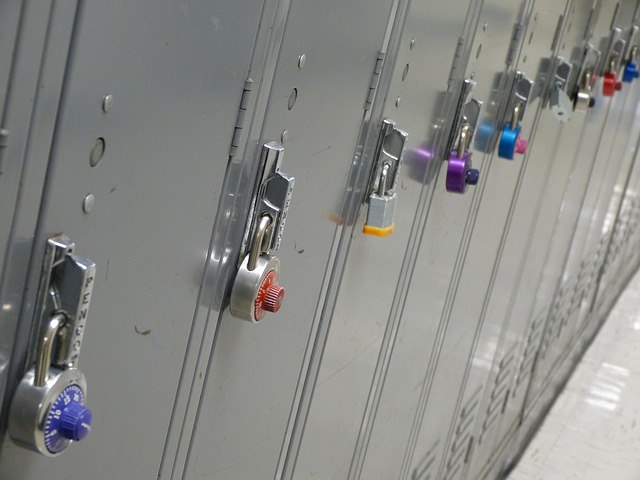The following resources focus on the educational climate and betterment of those serving the K–12 educational community.
How Measuring School Effectiveness Is Impacted by Summer Learning Loss This guest post comes from Chris Minnich, CEO at NWEA, a valued partner organization. Views expressed in guest posts are those of the author. For many schools, the Every Student Succeeds Act (ESSA) offers the opportunity to demonstrate contributions to student growth — in addition to proficiency — when it comes to accountability.
4 Best Practices for Implementing State Longitudinal Data Systems Thirty-seven states and the District of Columbia have a Statewide Longitudinal Data System (SLDS) in place to connect data between educational systems. (Education Dive)
Using State Data Systems to Create an Information Culture in Education This Policy Guide goes beyond looking at the foundations and structures of statewide longitudinal data systems to explore how state leaders can more intentionally and effectively develop a culture that uses data to inform critical education decisions.
What Does It Take to Get a Teacher Interested in Rural Schools? A Field Trip The purpose of the rural experience isn’t to line up jobs for the students, but to expose them to the joys and challenges in being a rural teacher and help them understand the culture and the landscape before they ever get inside a classroom. (CPR News)
If Only People Knew How Good Their State Data Systems Are After years of investment in state education data systems, states collect more data on education than they ever have. Yet many face a common barrier to making those data useful: Typically, few people besides specialists in state education agencies know what data those systems contain. The 50-State Comparison: Arts Education Data Collection and Reporting brings some hidden assets of state data systems out of the shadows. It assesses the capacity of each state and the District of Columbia to aggregate and report on arts education data their data systems already contain. We conclude that most states collect data on enrollments in arts courses and access to arts teachers, for example, but fewer report on the data publicly.
Phase 2: Interactive Dashboard – Seeking Feedback on Dashboard Elements ISBE developed the IL ePlan as a result of more than a year of inquiry into the best systems around the country and the needs of educators, practitioners, and students in Illinois with the goal to provide efficient technology that brings practitioners together for meaningful collaboration. The second phase of the IL ePlan will launch an interactive dashboard for education grantees and ISBE staff to access multiple information resources linking ISBE’s existing financial and educational web-based applications. It will become a responsive “one-stop shop” for Illinois school districts and ISBE to assist in planning and budgeting. ISBE is looking to gather feedback from administrators, grant, and fiscal staff on the most important data elements to include on the interactive dashboard. By completing the survey below by Friday, May 17, you will give us valuable information to guide our development. It will take less than 5 minutes of your time to complete. Complete the IL ePlan Survey now!
Teachers Are Paid Less Than Similar Professionals. See the Breakdown by State Overall, adjusted for inflation, the average weekly wage of public school teachers has decreased $21 from 1996 to 2018, while the weekly wages of other college graduates rose by $323. (Education Week)
How Measuring School Effectiveness Is Impacted by Summer Learning Loss For many schools, the Every Student Succeeds Act (ESSA) offers the opportunity to demonstrate contributions to student growth — in addition to proficiency — when it comes to accountability. This is a critical improvement, because looking at how much students grow academically during the school year — regardless of their achievement level — provides a more complete view of school effectiveness. One challenge that remains, however, in accurately evaluating a school’s impact on student growth is summer break.
Tool: Promoting Equity Using SEL One key to promoting equity in schools is using a culturally responsive lens to implement instruction and assessments. These guiding questions from CASEL’s newly enhanced District Resource Center will help you think through the process.
Living With ESSA’s Changes Summit With the Every Student Succeeds Act now in full effect three years after its passage, Education Week unpacks how states and districts are using ESSA to transform and customize their education systems, in line with the federal K–12 law’s grant of greater autonomy and the guardrails it lays down for quality and accountability. Join Education Week on Tuesday, May 14, 2019, from 1 to 3 p.m. ET for a deep dive into the Every Student Succeeds Act. This Online Summit provides you a unique opportunity to directly interact with reporters and experts about implementation of the nation’s marquee K-12 law. You can register today for the Living With ESSA’s Changes Summit.
When It Comes to Technology and Engineering, National Report Card Confirms: Girls Rule With increased attention on technology-related subjects during the past few years, how are U.S. students actually faring? Pretty well, according to the National Assessment of Educational Progress (NAEP)—also known as the Nation’s Report Card. One of the key findings from the assessment is that, despite the well-known existence of the gender gap in STEM (science, technology, engineering and math) fields, girls outperformed boys by a full five points—155 to 150.
Annual Financial Profiles Rank Illinois School Districts’ Financial Health 695 Illinois school districts achieved “financial recognition” by the Illinois State Board of Education (ISBE) for their 2018 finances.

